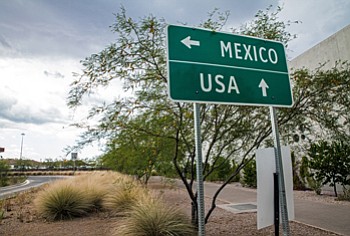Baker Institute Expert Examines Migration of Skilled Mexicans to Texas, Particularly Houston
Style Magazine Newswire | 7/18/2017, 12:19 p.m.
HOUSTON – (July 18, 2017) – While skilled Mexican migrants as a group have integrated into the economy and society of Texas, they continue to network with colleagues back home, according to an expert at Rice University’s Baker Institute for Public Policy.
Camelia Tigau, a visiting scholar in the institute’s Mexico Center, researcher at the Center for Research on North America at the Universidad Nacional Autonoma de Mexico and expert in skilled migration and Mexican diaspora, outlined her insights in a new paper, “Skilled Mexican Migrants in Texas: What the Numbers Hide.”
This paper examines Mexican skilled migration to Texas, most notably migration by physicians and particularly to Houston, and explores the factors that motivate such migrants to emigrate, whether they intend to return to Mexico permanently or remain in the U.S. and in what ways they contribute to knowledge-transfer activities between the U.S. and Mexico in the health care field.
“The MDs interviewed for this study confirm previous research showing that Mexican professionals contribute to the advancement of research and economic development in the United States in general and in Texas in particular through the publications they co-author, the patients they attend to and the key executive positions they hold in health research institutions,” Tigau wrote. “The participants interviewed for this study are interested in sharing the knowledge they acquired in the United States with others in Mexico, and they participate in binational networks of health experts as well as academic events in Mexico.”
Estimates based on data from the American Community Survey show that in 2014, 2,611,462 Mexican immigrants lived in Texas, of which 168,505 had a bachelor’s degree or higher. Of the Mexican immigrants in Texas, 617,293 lived in the Houston–The Woodlands–Sugar Land metropolitan area, and 36,793 had a bachelor’s degree or higher.
For her study, Tigau conducted 29 in-depth, semistructured interviews with migrants from a range of different professions. Ten of the subjects were women and 19 were men. Eight Mexican doctors (one woman and seven men) who work at internationally respected health institutions in Houston were interviewed. The paper sheds light on what could be viewed as two types of “care drain”: health care (the migration of medical doctors) and family care (migration of women), she said.
However, Tigau said, medical migration is advantageous for the countries of origin, which benefit from the experience and knowledge acquired by fellow citizens abroad; for the patients in destination countries, who receive quality care; and for the migrants and their families, who are able to improve their quality of life. “These doctors share their expertise in the global health system, demonstrating that international global networks of care may actually be more of a brain gain than a brain drain,” she wrote.
Tigau found that two primary reasons motivated the participants of the study to migrate to the U.S.: Mexico's lackluster economy and its drug-related violence. However, the migrants’ motivation varied depending on when they decided to leave Mexico. Migrants who left in the 1980s and 1990s mainly point to economic considerations, including the lack of research funds, as the reason behind their decision to leave Mexico. By comparison, migrants who left after 2006 were motivated by the violence in Mexico; the timing coincides with the carnage related to former President Felipe Calderon’s war on drugs in Mexico.
“The presence of migration routes indicates that immigration policies at the regional, state and city levels may be as or more important than those at the federal level in the United States and Mexico, as local policies and programs may be better able to focus on certain populations, industries and fields of cooperation,” Tigau wrote. “Therefore, research on the decentralization of cooperation in skilled human mobility could explore particular immigration routes and their characteristics, rather than the general flow of Mexican skilled migration to the United States.”







